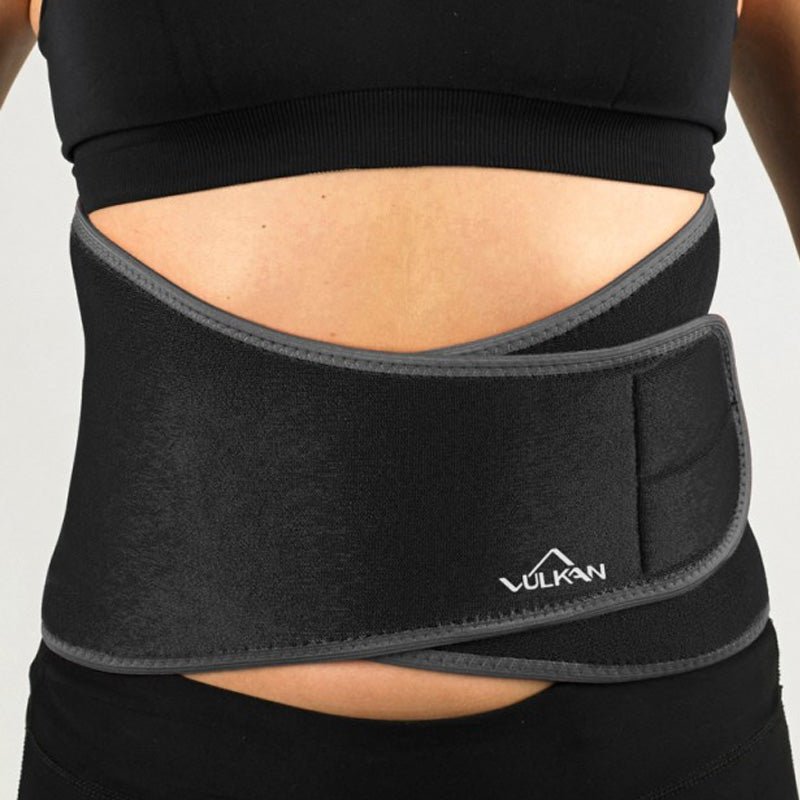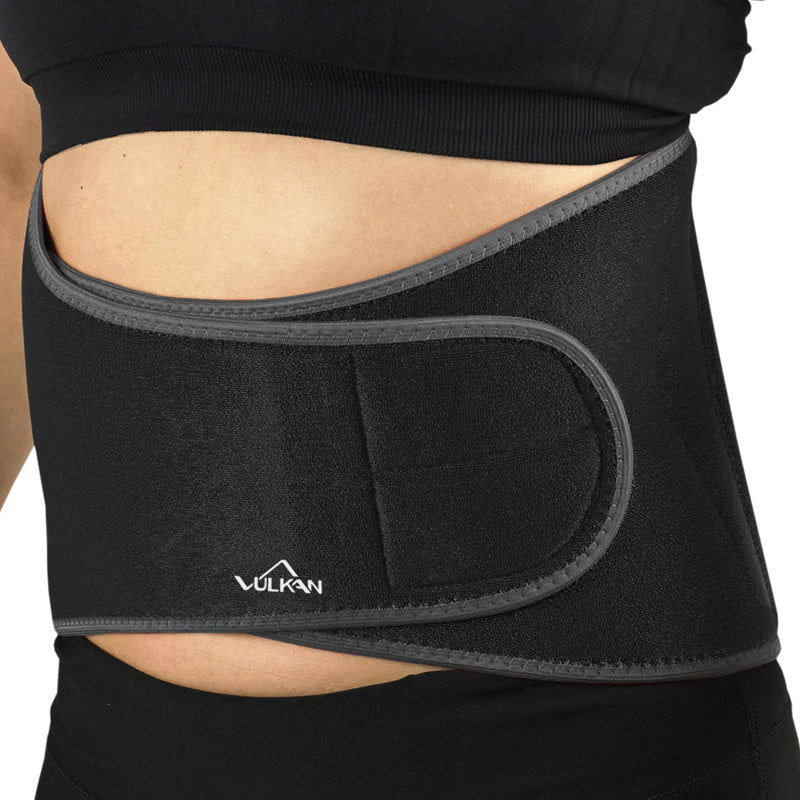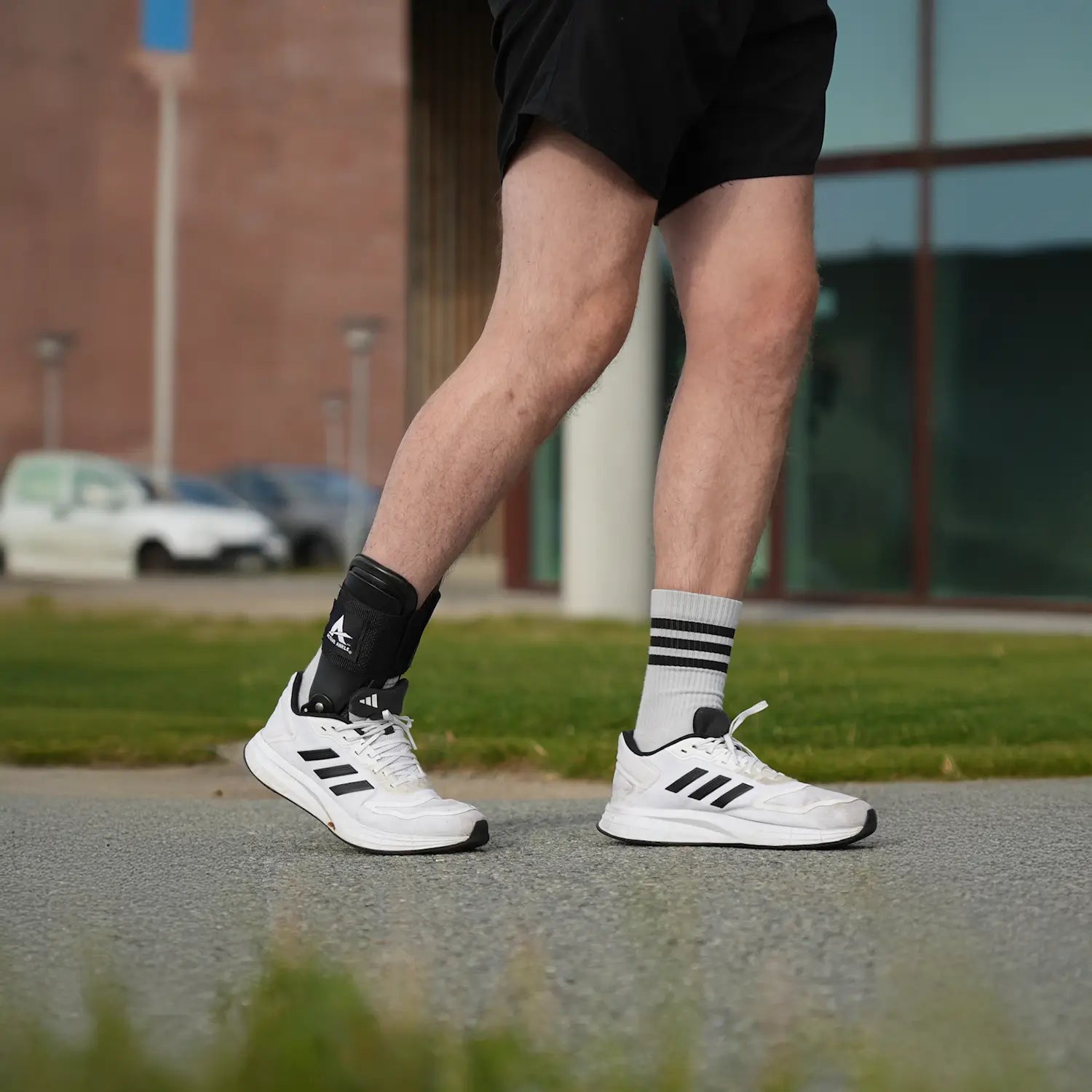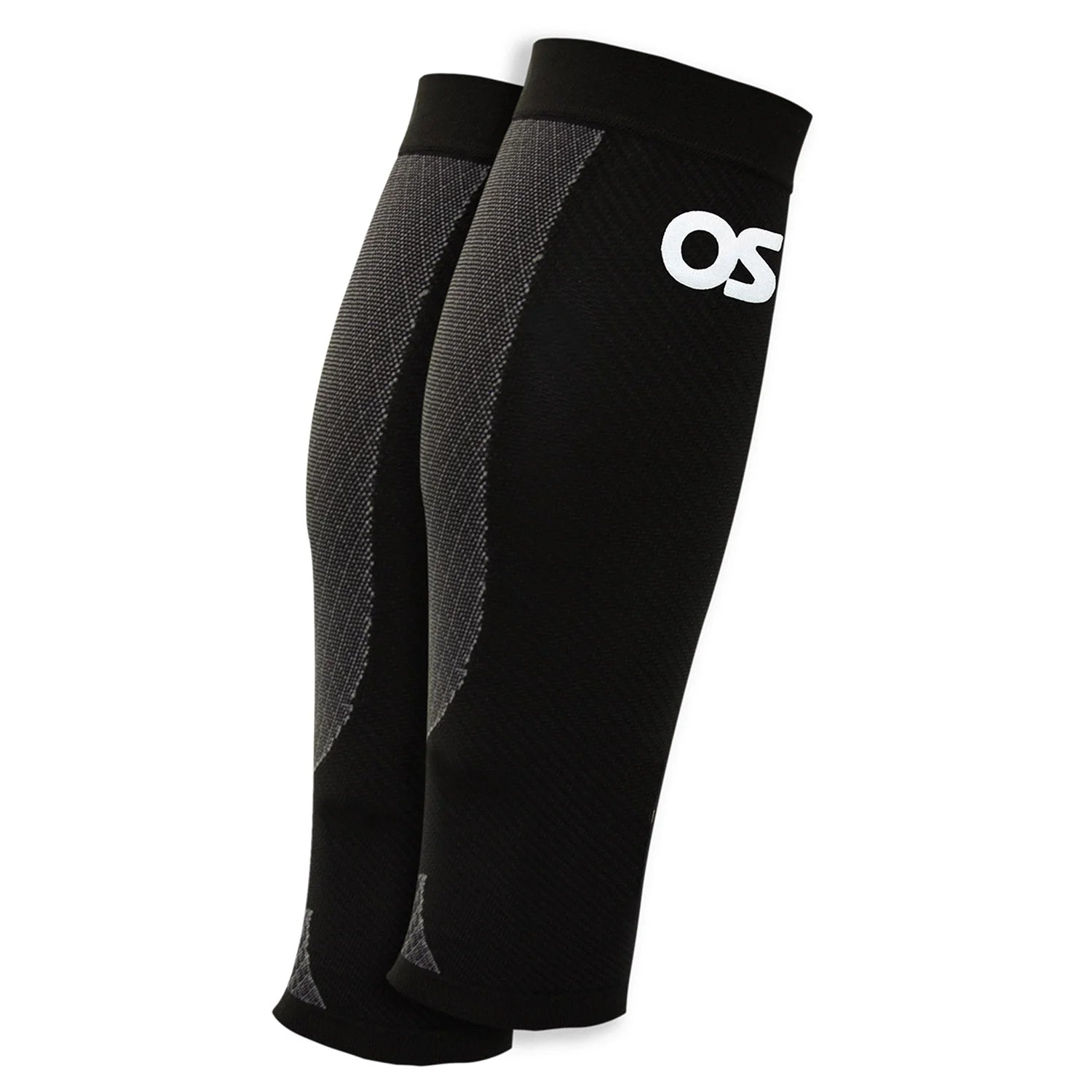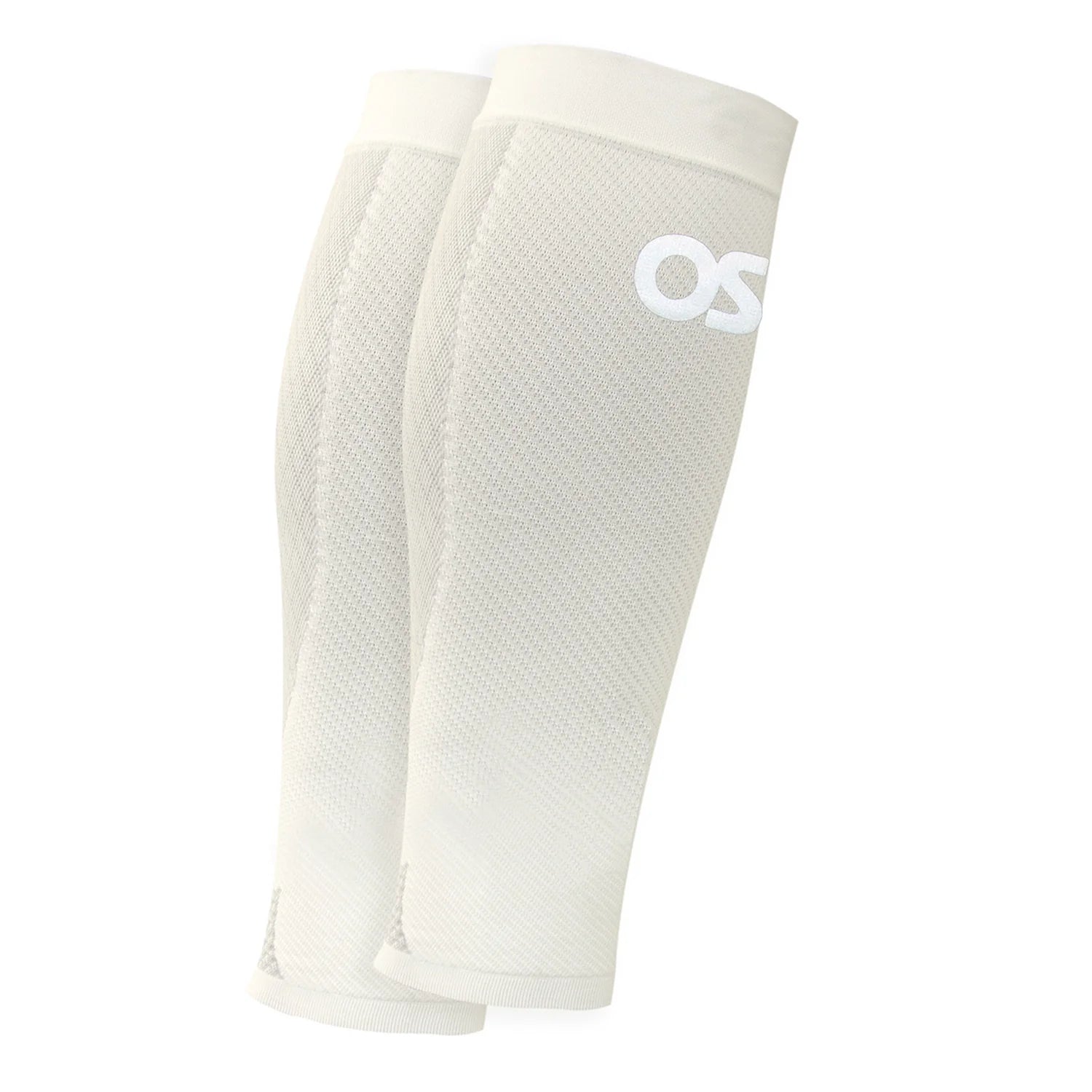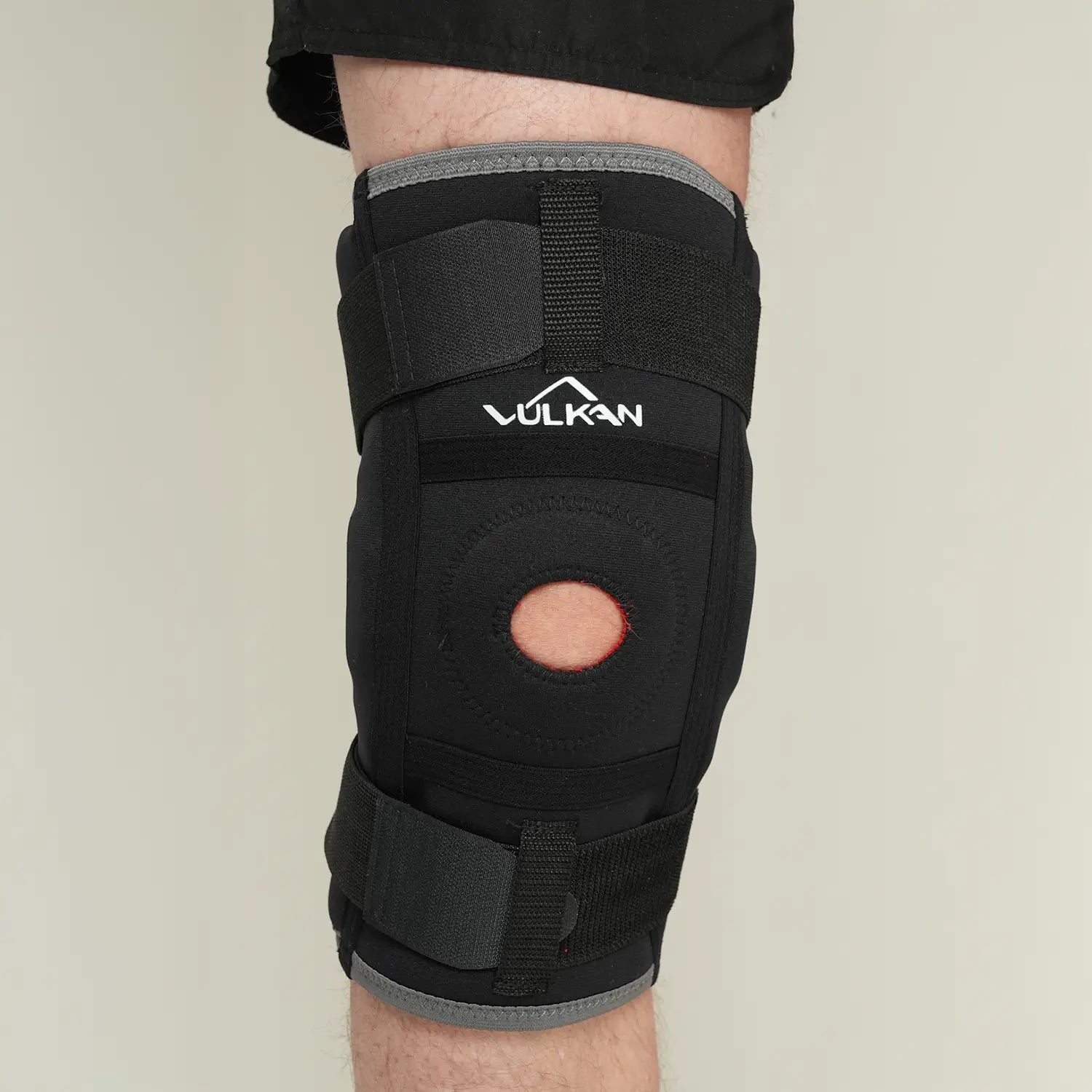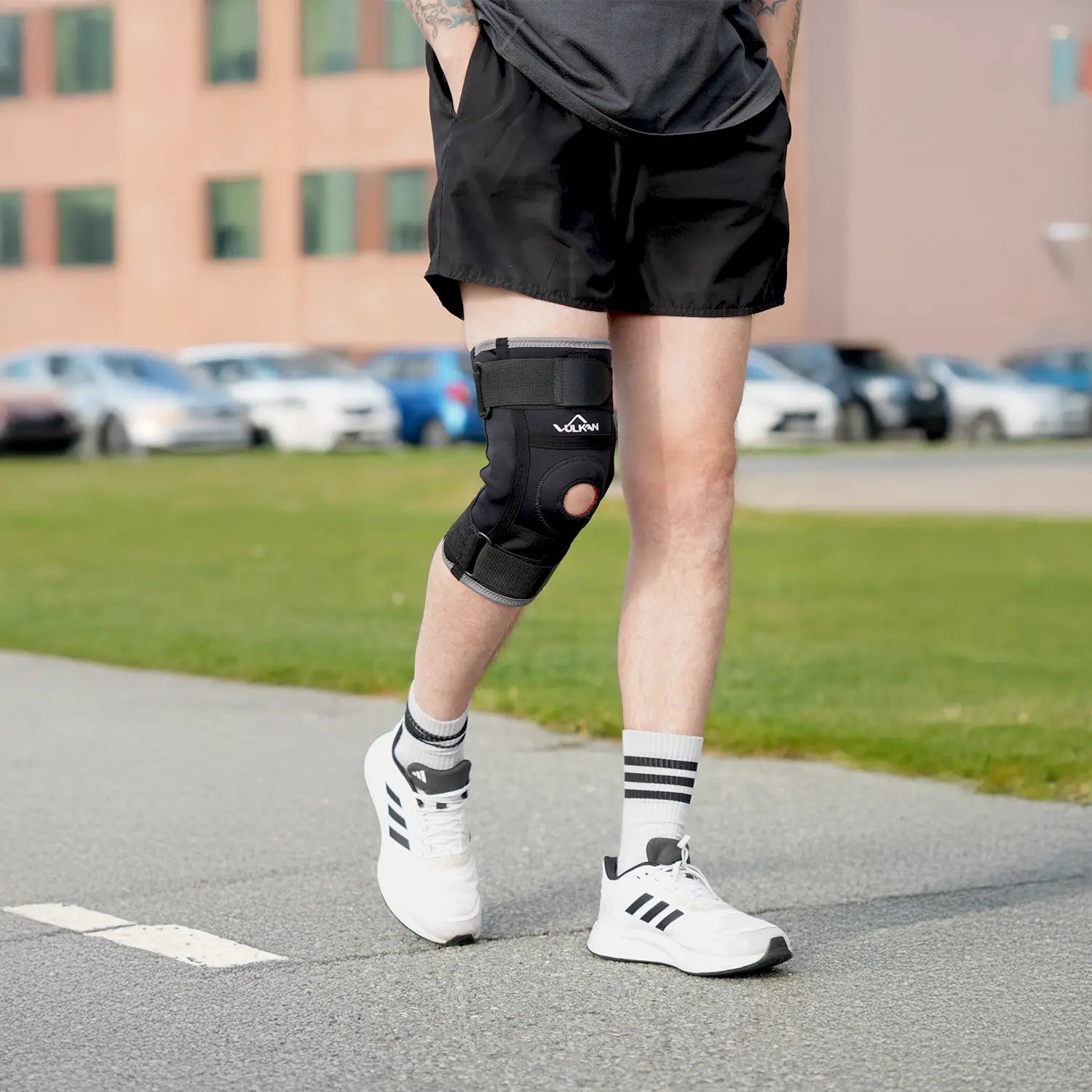
Periostitis
Shin splints are pain along the inside of the shinbone, often with repetitive stress such as running, walking fast or jumping. The symptoms come on gradually and feel like a soreness or burning pain that worsens with activity. Untreated symptoms can affect everyday life, as even short walks or stairs can start to hurt. However, with the right measures, it is usually possible to relieve the pain and return to exercise safely.
Symptoms of periostitis
- Pain on the inside of the lower leg, especially during and after physical activity
- Tenderness along the shinbone, sometimes even when pressed
- Stiffness and aching pain in the lower leg, especially when warming up or when you start running
- The pain often subsides with rest but may return when you put weight on the leg again.
- In some cases, the area may feel slightly swollen or warm.
Causes of periostitis
Periostitis is usually caused by repeated small loads that create irritation in the periosteum. Common causes include rapid increases in training volume, hard surfaces, worn or improper shoes, and lack of shock absorption. Certain biomechanical factors come into play, such as overpronation, tight calf muscles, or weak foot and hip stability. Running on hills, many jumps, or one-sided training can also trigger the condition. In addition, the risk increases with stress, poor recovery, and insufficient sleep.
Furthermore, it is common for the muscles and tendons on the inside of the lower leg to become overstrained, which further increases the pressure against the bone. Stiffness in the calves and weak foot muscles can also contribute to the problem. You often notice the problems when starting a new training period or after taking a longer break from running.
Diagnosis
The diagnosis of periostitis is usually made through a conversation and examination. The doctor or physiotherapist will ask about your exercise habits, how the pain started, and examine the leg for tenderness and swelling. Sometimes other causes of the pain may need to be ruled out, such as stress fractures or muscle tears, especially if the pain is very severe or does not go away with rest.
Treatment of periostitis
Treatment aims to reduce pain and inflammation and prevent new injuries. The first step is always to reduce or take a break from the activity that triggers the symptoms, such as running. Rest is important, but total inactivity is not recommended – instead, try to find alternative exercises that do not put as much strain on the lower legs, such as cycling or swimming.
Applying ice to the sore area can help with the pain, and in some cases, compression stockings can provide extra support. It is also wise to review your shoes and possibly change to a pair with better shock absorption or use inserts if necessary. A physiotherapist can show you stretching and strengthening exercises for the calf and foot muscles, which often helps in the long run.
For long-term problems, taping, laser or shockwave therapy may be appropriate, but for most people, self-care and gradual building up of training is sufficient. Avoid starting running again until you are completely pain-free when walking.
Preventive measures
Plan your training so that you increase the load gradually. Vary the surface and avoid too many hard sessions in a row. Replace worn shoes in time and choose models that suit your foot and running style. Include mobility for the calf and ankle, as well as strength for the foot, lower leg and hip for better control in the step. After tougher sessions, simple self-care is often enough: light movement, cooling down and recovery with sleep and nutrition. Small adjustments in everyday life make a big difference in avoiding relapse.
When should I seek medical attention?
Contact your healthcare provider if the pain does not improve after two to three weeks of self-care and reduced strain. Seek help earlier if you have nighttime pain, significant swelling, redness, or if you suspect a stress fracture. Also contact your healthcare provider if the pain is interfering with your daily activities or if you experience numbness or muscle weakness.
Recommended products
How long does periostitis last?
Often four to eight weeks if treated early. Long-term problems may take longer, especially if you have continued to exercise despite the pain.
Can I continue to exercise with periostitis?
Yes, but switch to low-impact workouts like cycling or swimming. Avoid running and jumping until the pain is clearly reduced.
Which shoes or inserts help best?
Shoes with good shock absorption and stability help many people. If necessary, shoe inserts and shock absorbing soles can reduce the drag on the bone.
Does compression help?
Compression stockings can increase comfort and provide light support during everyday activities and recovery. Always combine with gradual increase.
What exercises are good to start with?
Start with calf stretches, ankle mobility and light toe raises. Then progress to controlled strength for the foot, lower leg and hip.
How do I avoid relapse when I am pain-free?
Increase the load slowly, vary the surface and change shoes in time. Maintain mobility and strength as part of your weekly routine.
When should I seek medical attention?
Seek medical attention if pain persists or increases despite self-care, if there is nighttime pain, significant swelling or if a stress fracture is suspected.
Which products do you recommend first?
Start with compression socks for comfort and shoe inserts or shock-absorbing insoles for relief. Add calf protectors if needed and follow a clear progression plan.







